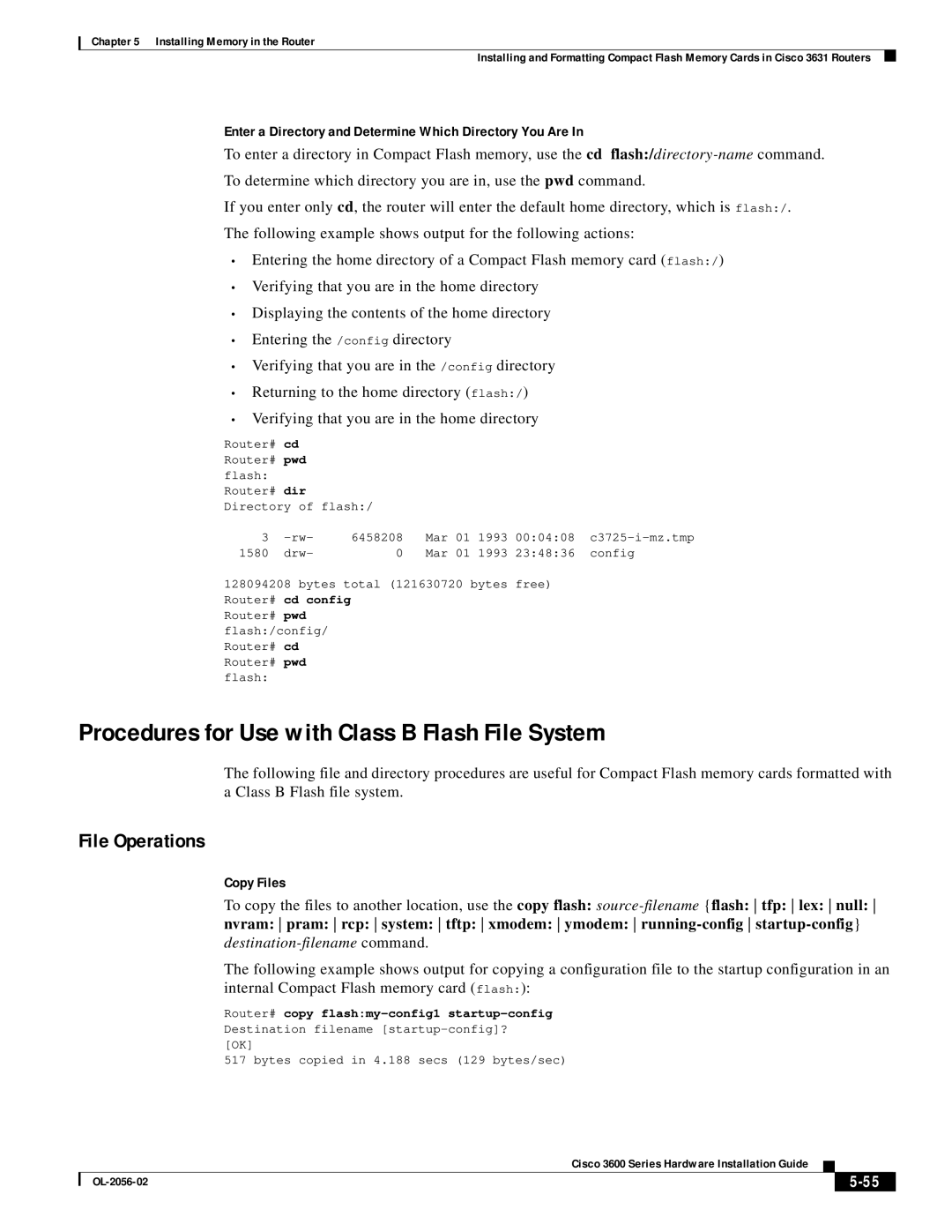
Chapter 5 Installing Memory in the Router
Installing and Formatting Compact Flash Memory Cards in Cisco 3631 Routers
Enter a Directory and Determine Which Directory You Are In
To enter a directory in Compact Flash memory, use the cd
To determine which directory you are in, use the pwd command.
If you enter only cd, the router will enter the default home directory, which is flash:/.
The following example shows output for the following actions:
•Entering the home directory of a Compact Flash memory card (flash:/)
•Verifying that you are in the home directory
•Displaying the contents of the home directory
•Entering the /config directory
•Verifying that you are in the /config directory
•Returning to the home directory (flash:/)
•Verifying that you are in the home directory
Router# cd Router# pwd flash: Router# dir Directory of flash:/
3 | 6458208 | Mar | 01 | 1993 | 00:04:08 | ||
1580 | drw- | 0 | Mar | 01 | 1993 | 23:48:36 | config |
128094208 bytes total (121630720 bytes free) Router# cd config
Router# pwd flash:/config/ Router# cd Router# pwd flash:
Procedures for Use with Class B Flash File System
The following file and directory procedures are useful for Compact Flash memory cards formatted with a Class B Flash file system.
File Operations
Copy Files
To copy the files to another location, use the copy flash:
nvram: pram: rcp: system: tftp: xmodem: ymodem:
The following example shows output for copying a configuration file to the startup configuration in an internal Compact Flash memory card (flash:):
Router# copy
[OK]
517 bytes copied in 4.188 secs (129 bytes/sec)
Cisco 3600 Series Hardware Installation Guide
|
| ||
|
|
